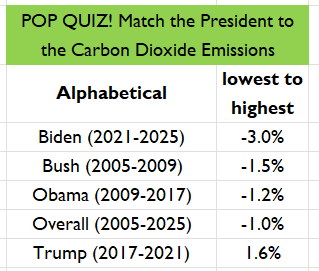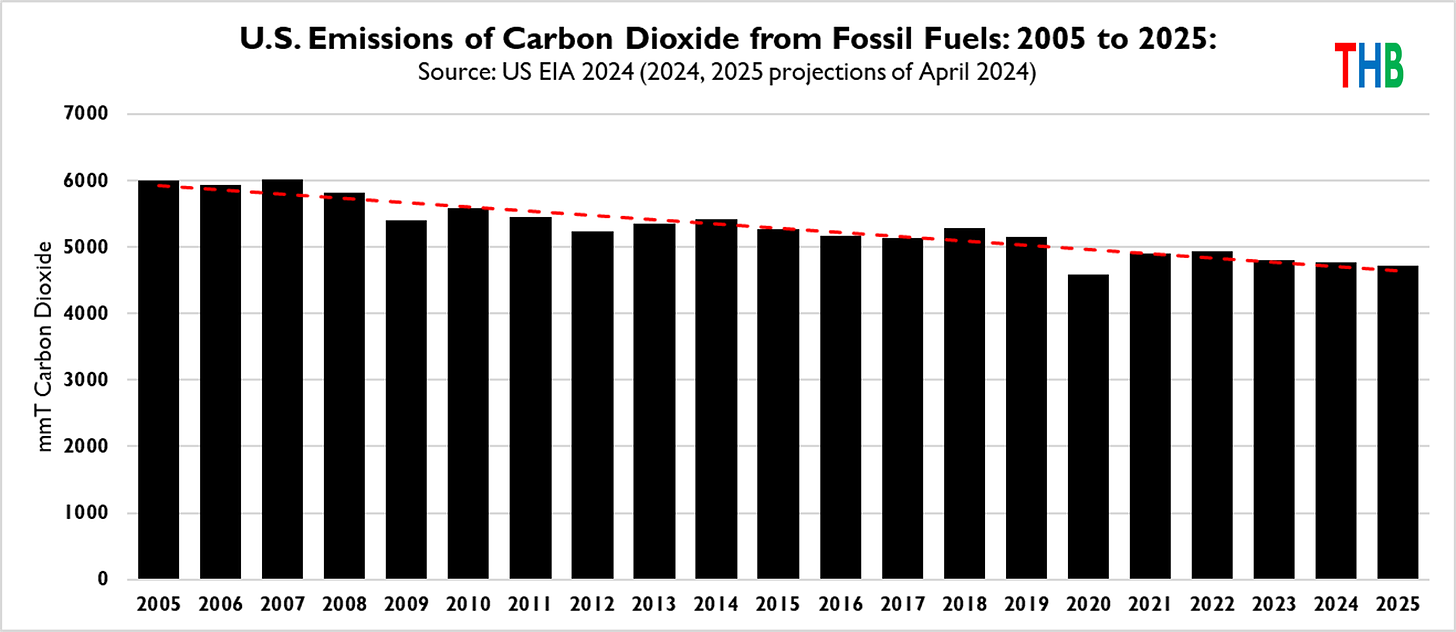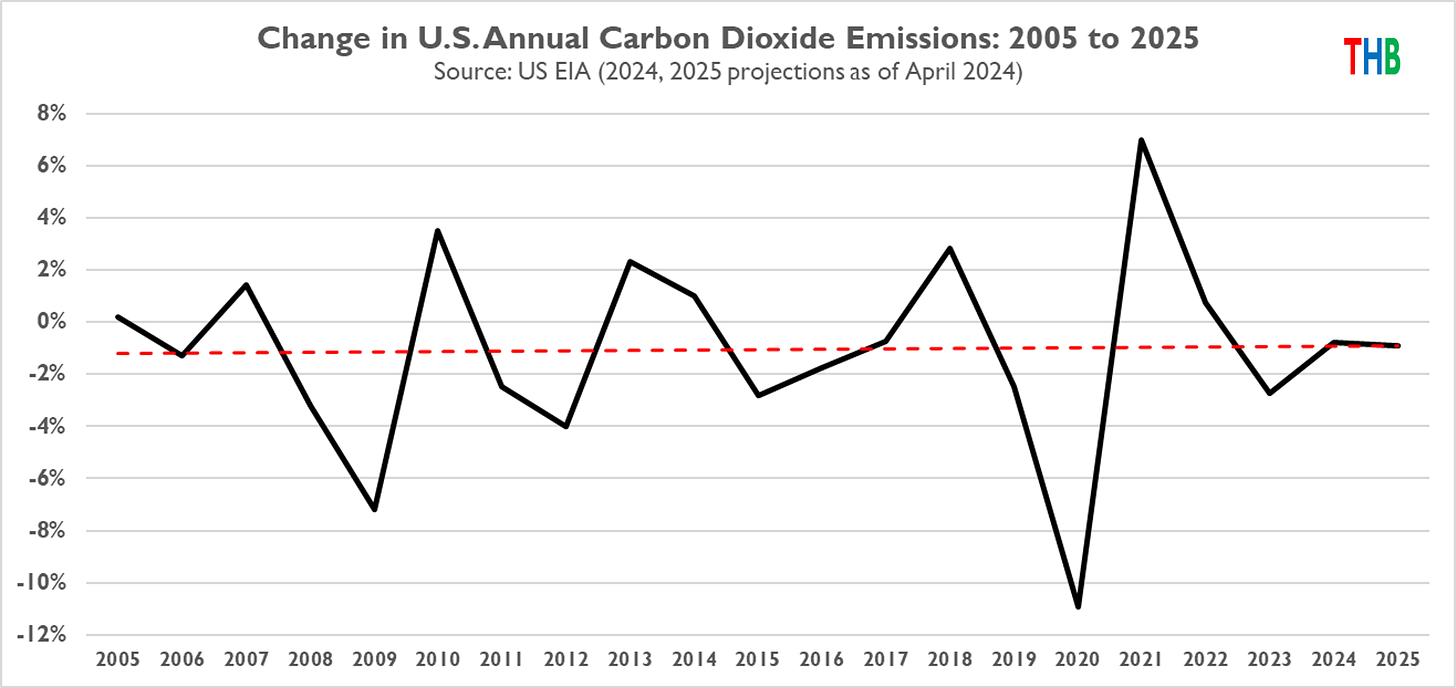Do U.S. Presidents Matter for Carbon Dioxide Emissions Reduction?
The answer is not what most people will expect

Pop Quiz!
Before reading on, please provide your best guesses matching the presidential administration with with the annual rate of carbon dioxide emissions reductions over each president’s term in office — dating to 2005, which is the baseline year commonly used to assess U.S. emissions reduction progress.

I’ll provide the answers after sharing some data. The figure below shows overall U.S. carbon dioxide emissions from 2005 to 2025 (with 2024 and 2025 estimated in April 2024, via the outstanding U.S. Energy Information Agency).

You can see that over the past two decades U.S. emissions have declined very steadily, with notable departures in 2009 (Global Financial Crisis, GFC) and 2020 (COVID-19 pandemic) only to snap back more or less on trend. The steadiness of the decline is remarkable given that these two decades saw two U.S. presidents who championed emissions reductions (Obama and Biden) and two who did not (Bush and Trump).
This raises a question: How much do U.S. presidents matter for the annual pace of emissions reductions?
To get a better sense of the answer to this question, let’s look at annual rates of changes in emissions, shown in the figure below.

The biggest year-on-year changes were the years of the GFC and COVID-19, and respective bounce backs in the years following. The overall growth rate is negative, which is why U.S. emissions have decreased since 2005. But of note, there is no trend at all in the rate of change in that decline. There is no evidence of an acceleration in emissions reductions, due to policy or anything else, and no such indication is expected in the data before 2026.
…click on the above link to read the rest of the article…